Matador Network's Blog, page 884
April 9, 2020
Cookbooks from famous US bakeries
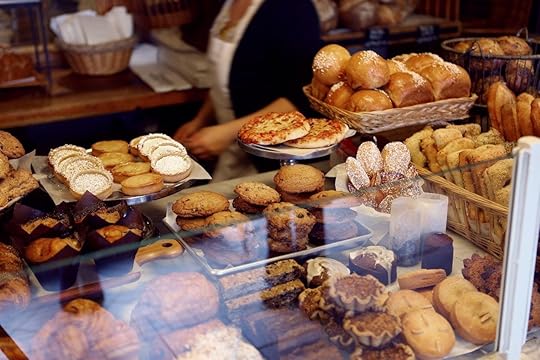
Whether you call it isolation baking, homebound baking, or comfort cooking, these days people from all walks of life are heading to the kitchen to relieve stress and learn a new skill. Turning flour, butter, and sugar into tasty treats from cake to bread to croissants is a much-needed distraction from the anxiety-inducing news cycle. Besides, couldn’t we all use a cookie right now? If you can’t leave your house to pick up a dozen of your favorite pastries, might as well make them yourself.
Books from some of the best bakeries in the United States are as good a place as any to start if you’re ready to pick up that whisk and dive into your own baking journey. There’s inspiration for everyone out there — especially if you’re feeling the effects of cabin fever. These 11 cookbooks will take you on a pastry-fueled road trip without ever leaving your kitchen.
1. Boston: Flour Bakery + Cafe

Photo: Houghton Mifflin Harcourt
Flour Bakery + Cafe in Boston sells over 220,000 sticky buns a year — that’s 600 a day. Not for the faint of heart, these oversized carb bombs are baked in a butter and sugar concoction that chef and co-owner Joanne Chang lovingly calls “goo.” Chang’s first cookbook, Flour, contains the OG sticky bun recipe. Chang’s newest cookbook, Pastry Love, should be your bible for the upgraded apple cider sticky buns, as well as sticky buns in the kouign-amann style from the Brittany region of France, chocolate caramel oreos, cherry crumb pie, and nutella babka. In this compendium of both Chang and Flour’s go-to recipes, you’ll eat up Chang’s passion for technique, from toasting nuts to whipping eggs, and her true love of all things pastry.
2. San Francisco: Tartine
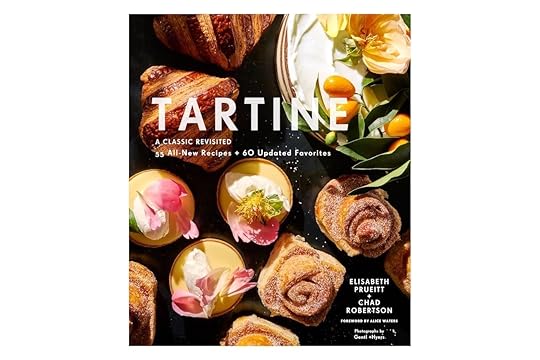
Photo: Chronicle Books
Most mornings you’ll find a line down San Francisco’s Guerrero Street for Tartine, where regulars and tourists eagerly wait for first dibs on boulangerie-worthy croissants that shatter on contact and sugar-crusted morning buns that make your mouth sing. Not to mention fancy fruit galettes, unbelievable brioche bread pudding, buttermilk scones, and banana-cream pie.
Everything at Tartine is tasty and has been since 2002 when husband-and-wife team Chad Robertson and Elisabeth Prueitt first opened the Mission District bakery. The same can be said for Tartine: A Classic Revisited, an updated and expanded volume of their 2006 cookbook that includes 68 new recipes, including gluten-free substitutions, plus mouth-watering photography that do the eye-catching confections justice.
3. Detroit: Sister Pie
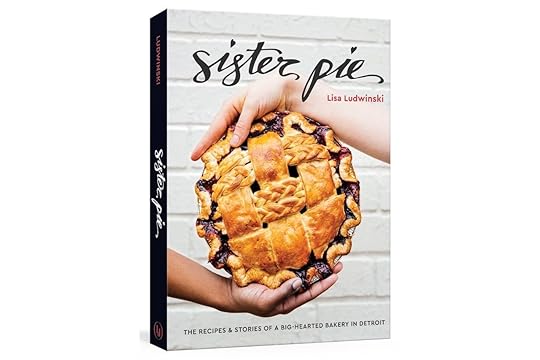
Photo: Penguin Random House
If you think you know pie, think again. Sister Pie, both the bursting-with-personality cookbook and bakeshop, turn pie upside down. The corner pie shop with its pink neon sign has a list of regulars as long as its pie menu. Speaking of the pie menu, this is not your ordinary apple kinda place. Nostalgia mixes with novel recipes for mind-blowing mashups like sour cherry bourbon, strawberry pistachio, sweet corn nectarine, and coffee chess pie. And let’s not forget the peanut butter paprika cookies. Even better, pie comes with a side of kindness thanks to Pie it Forward, the bakery’s program that lets you purchase a slice for a stranger.
4. Maine: Standard Baking Co.

Photo: Down East Books
Standard Baking Co. in Portland, Maine, is not your average hipster bakeshop or trendy café. Opened in 1995 by Alison Pray and her husband Matt James in an old brick warehouse across from Portland Harbor, it’s a neighborhood bakery that’s been churning out top-notch breads and unparalleled pastries for 25 years. So it’s no surprise the bakery’s cookbook, Standard Baking Co. Pastries, brings to mind cookbooks of a simpler time. In this cozy-up companion for the home baker, you’ll find more than 60 recipes for Standard Baking Co.’s coveted croissants, morning buns, wild blueberry oat scones, pecan financiers and almond macaroons, bringing that same simple sophistication to your kitchen.
5. New York City: Dominique Ansel Bakery

Photo: Simon & Schuster
Everyone can bake. It’s true. Not only is that the title of Dominique Ansel’s fresh off the presses cookbook, but with the classically trained James Beard award-winning pastry chef by your side — and, yes, the creator of the cronut — this elevated how-to manual can boost your baking game. Fundamentals rule here. Ansel decodes his go-tos, from buttercream and pound cake to cookie base and chocolate brownies, and builds from there, so you’re not jumping straight into an impossibly glossy chocolate glazed cake, but layering skills as you go. And like his bakeries in New York, Tokyo, Hong Kong, London, and Los Angeles, the book is immaculate. It’s a design-forward gem of clean lines, white space, and technically perfect pastries that look both sculptural and scrumptious.
6. Los Angeles: République
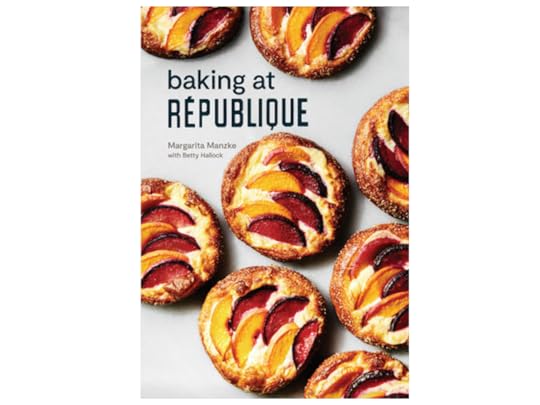
Photo: Penguin Random House
The baking begins well before sunrise at République. Co-owner Margarita Manzke and her team of pastry chefs proof, laminate, bake, fill, glaze and ice a dizzying array of delights, so by 8:00 AM, the almost 15-foot long pastry case is brimming with caneles, brioche, and cakes. Once it’s gone, it’s gone — and the raspberry-pistachio kouign amanns, s’mores bomboloni, and croissants are usually the first to go. That same dedication to craft and flavor comes through in Baking at République, a photographic feast for the eyes, which not only includes recipes for République’s pastry case sell-outs but also traditional Filipino desserts like bibingka and halo halo that Manzke grew up eating.
7. Virginia: Red Truck Bakery

Photo: Penguin Random House
Let’s start with Red Truck Bakery’s sweet potato pecan pie: Impossibly flaky dough is layered first with sweet potato filling and then bourbon-spiked pecans to make a creamy, crunchy dessert loved by both Obama and Oprah. Baker and owner Brian Noyes started selling baked goods out of the back of his old red truck (which he purchased from fashion designer Tommy Hilfiger). He’s since expanded his bakery operation into two Main Street stores in rural Virginia. That same small-town charm is brought to the Red Truck Bakery Cookbook, a page-turner of crowd-pleasers, from the famous granola and holler doughnuts to the double-chocolate moonshine cake and watermelon pie that’s guaranteed to make you drool.
8. Los Angeles: Sweet Laurel

Photo: Penguin
Random House
Sweet Laurel’s debut cookbook is just as photogenic as its dainty digs on Sunset in Los Angeles, an Instagram dream bathed in Millennial pink with pastries almost too pretty to eat. But these aren’t your ordinary baked goods. Owners Laurel Gallucci and Claire Thomas’s creations are free of grain, gluten, refined sugar and dairy, yet just as delightful and sought-after as their sugar-encrusted counterparts. Make like Mandy Moore and Lauren Conrad, both fans, and whip up pretty layer cakes, coconut whipped cream, peach cobbler, currant scones and olive oil citrus cupcakes made of almond flour, coconut oil, maple syrup, organic eggs, and dates — and get ready for plenty of “likes!”
9. Ann Arbor: Zingerman’s Bakehouse
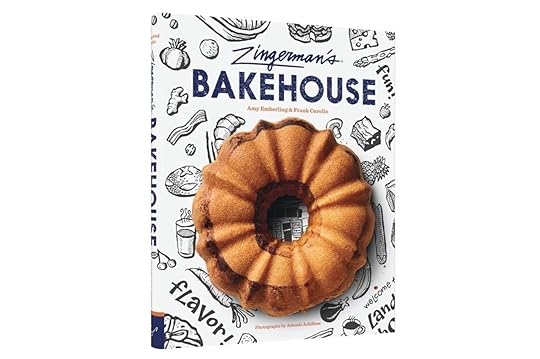
Photo: Chronicle Books
Zingerman’s Bakehouse, the cookbook, and Zingerman’s Bakehouse, the bakery in Ann Arbor, Michigan, have a lot in common. Both are full of personality, from the staff smiles in person to the colorful advice and anecdotes from bakery co-owners Amy Emberling and Frank Carollo put down on paper. Both are tried, tested, and true; the artisanal bakery has been going strong since 1992. And both feel like a warm hug, whether you’re buying up their famous sour cream coffee cake, spicy ginger cookies, or black magic brownies in-store or whipping them up at home. Either way, a trip to Zingerman’s next time you’re in Ann Arbor is a must.
10. Santa Monica: Huckleberry Café
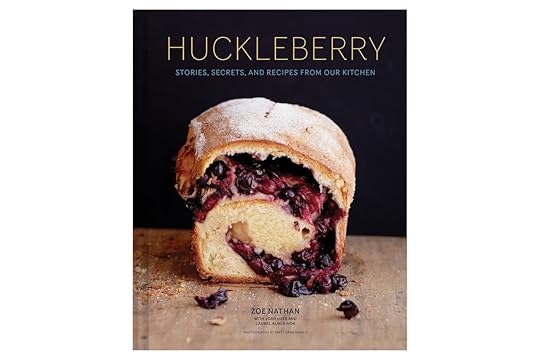
Photo: Chronicle Books
Huckleberry Café, owned by husband-and-wife duo Josh Loeb and chef Zoe Nathan (who trained at Tartine) in Santa Monica is a scrumptious scene of people-watching and pastry eyeing that inevitably ends in a sugar high. Hey, even if you go with a savory smashed avocado toast or one of the famed fried egg sandwiches, you still have to cap it with, say, powdered sugar beignets, a chocolate hazelnut scone, or a slice of lemon pistachio cake. Or better yet, go sweet and savory in one with the bakery’s maple bacon biscuits. Take that high home with the Huckleberry cookbook, a friendly guide through cakes, crostadas, and cobblers that makes even brioche seem doable.
11. New York City: Milk Bar
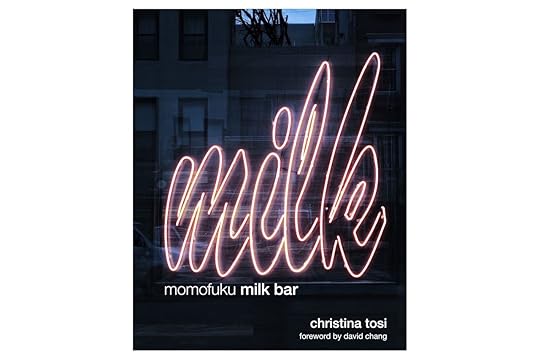
Photo: Penguin Random House
Not all cookbooks need to be practical. Case in point: Momofuku Milk Bar: A Cookbook. Like its original East Village outpost (it has since expanded to Los Angeles, Toronto, and more), this is a Willy Wonka wonderland of nostalgia, sprinkles, and cereal milk packed with personality and playful photos. Yes, it serves up recipes for owner and mastermind Christina Tosi’s epic compost cookies, birthday layer cake and Milk Bar pie, but these are not one-bowl creations made of pantry staples; they’re multi-step recipes that call for tough-to-get ingredients like glucose and corn powder. That said, it’s not always the destination, it’s the journey — and this ride is rollercoaster of fun. 

More like this: Now’s the time to get really good at baking bread
The post 11 cookbooks from the best bakeries across the US appeared first on Matador Network.

Outdoor movie screening during COVID

Traditional movie-going is out of the question in the era of social distancing, but the people of Cork, Ireland, aren’t letting a pandemic keep them from their favorite classic movies.
Scott Dugan, a freelance production manager and resident of Frankfield Villas on Windmill Road in Cork, organized the event. He used a projector to set up an old-fashioned outdoor cinema on the side of a local house. The audio is broadcast on an FM band that residents can tune into.
The first movie night was held on Friday and was so popular that they plan to make it a regular occurrence. The first movie shown was 1953 Gentlemen Prefer Blondes featuring Marilyn Monroe.
My neighbour @scottduggan had the most beautiful idea to project classic movies for our terrace, listening to the movie on an FM signal sitting in our own separate front gardens made us all feel a little less alone
India lockdown clears pollution
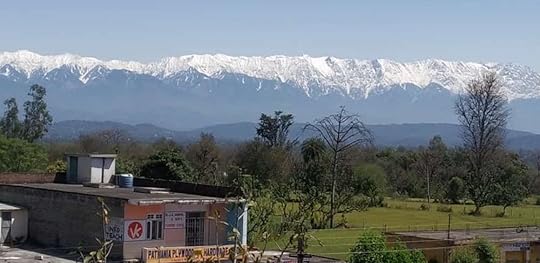
Any upsides to the coronavirus crisis pale in comparison to the tragedy of the massive death toll, but that doesn’t mean we should totally ignore the silver linings. In India, the shutdown of factories and reduction of the use of trains, planes, and vehicles has led to some of the clearest skies in recent memory.
The country is home to 14 of the world’s 20 most polluted cities, but since it entered a nationwide lockdown on March 25, Mumbai was the only Indian city in the top 20 by April 8. Pollution levels have dropped so dramatically that some residents in northern India say they can see the Dhauladhar range, part of the Himalayas, from over 100 miles away for the first time in decades.
Himalaya mountains can be seen from Jalandhar since pollution has reduced in Punjab. Beautiful sight
Delta two year coronavirus rebooking

Airline cancellation and rebooking policies are notoriously strict, but the coronavirus pandemic is forcing airlines to relax the rules to accommodate millions of passengers.
Delta recently unveiled a new cancellation policy — the most flexible in the industry, thus far — which will allow passengers to rebook flights for up to two years. Given the uncertainty surrounding travel right now, Delta reportedly wanted to give travelers some flexibility and peace of mind.
According to the new policy, “Tickets normally expire one year after purchase, but we’re providing waived change fees and greater flexibility to travel through May 31, 2022.” The rule applies to passengers who booked tickets as of April 3 for travel in April or May 2020, or have existing travel credits or canceled flights from March, April, or May 2020. Credits issued to these passengers will be automatically extended through May 2022.
It’s important to remember, however, that passengers are not required to accept flight credits for canceled flights. The Department of Transportation has stated, “Carriers have a longstanding obligation to provide a prompt refund to a ticketed passenger when the carrier cancels the passenger’s flight or makes a significant change in the flight schedule and the passenger chooses not to accept the alternative offered by the carrier.” Passengers are also entitled to be refunded for any bag fee, seat assignment, and other extras that may have been booked. 

More like this: Airlines must refund passengers for canceled flights during the COVID-19 crisis
The post Delta’s new cancellation policy allows passengers to rebook for two years appeared first on Matador Network.

April 8, 2020
Powerful LGBTQ-related monuments
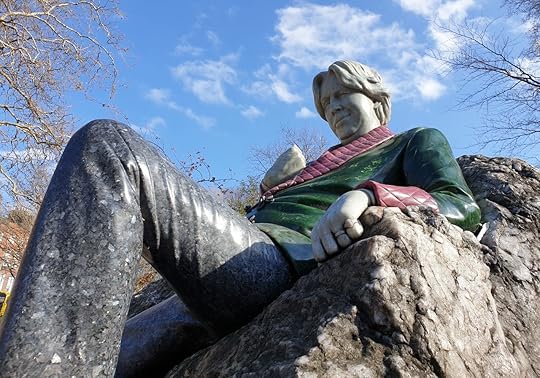
For centuries, LGBTQ people were forced to lead invisible lives. You couldn’t find them in the pages of history books. No one erected monuments in their honor.
Throughout history, defiant social reformers made visibility one of their chief concerns in the fight for LGBTQ rights. In 1978, Harvey Milk shouted, “Gay brothers and sisters, you must come out!” During the AIDS epidemic, the LGBTQ community stopped traffic in city streets while holding signs that read “Silence = Death.” Today, trans marches are erupting around the world in response to the violence and prejudice endured by the transgender community.
Visibility, the antidote to intolerance, goes far beyond flesh and bone, however. That’s why monuments dedicated to the LGBTQ community are crucial in fostering societal acceptance. Long-lasting memorials celebrating queer identities reduce stigma and stop discrimination among current and future generations.
For LGBTQ individuals, queer monuments are of even greater importance. As the gay author and activist James Baldwin once wrote, “If you know whence you came, there are absolutely no limitations to where you can go.” Eight of the LGBTQ monuments on this list honor where LGBTQ people have been, and one, to be unveiled in the coming years, provides hope for a limitless future. Together, they tell a visual story about queer life around the world connected by one common thread: the enduring capacity for resilience.
Here are nine remarkable LGBTQ monuments worth checking out.
1. Legacy Walk — Chicago, Illinois
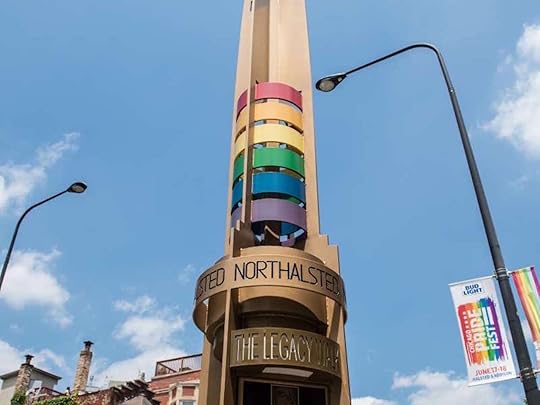
Photo: Legacy Project Chicago
Christine Jorgensen, Cole Porter, Margaret Chung, and James Baldwin are only a few of the 40 queer icons you’ll spot along this half-mile stretch of North Halstead Street in Chicago. Here, bronze plaques dedicated to LGBTQ individuals whose contributions had an immense impact on society decorate the sidewalk. The plaques, affixed to 20 rainbow-striped pylons from Belmont Avenue to Grace Street, are part of the first outdoor LGBTQ museum and the longest collection of bronze biographical memorials in the world.
Located in the city’s historic gayborhood, Boystown, the Legacy Walk is an accessible way for people to connect with queer histories often missing from educational texts. A new memorial plaque is added to the roster annually on National Coming Out Day (October 11). In 2021, the city plans to open a visitor center as a way to showcase new markers added to the installation. Visitors can join guided Legacy Walk tours between March and November.
2. Memorial to Homosexuals Persecuted Under Nazism — Berlin, Germany

Photo: Andrew Baumert/Shutterstock
Between 1933 and 1945, Nazi personnel arrested approximately 100,000 gay men. Around 50,000 of those men were convicted, and roughly 5,000 to 15,000 ended up in concentration camps. With no available data, it’s unclear how many died. The regime also targeted lesbian, bisexual, and trans individuals, but with a lack of hard data chronicling their plight, estimating the number of those impacted is impossible.
In 2008, Berlin unveiled this memorial to commemorate the thousands of LGBTQ individuals persecuted under Nazism. The cold concrete cube tucked away behind a thicket of oak trees within the city’s expansive Tiergarten invites visitors to look inside a small window where a video of a same-sex kiss plays on repeat. The effect is hauntingly romantic — even in the darkest of places, love wins.
3. Gay Memorial Stone — Paris, France
On July 6, 1750, Frenchmen Bruno Lenoir and Jean Diot were burned alive for the crime of being gay. They were the last two men in France executed because of their sexuality.
In 2014, the city of Paris unveiled the Gay Memorial Stone at the corner of Rue Montorgueil and Rue Bachaumont, where police caught the couple. This unassuming plaque may only be a simple marker on the sidewalk, but the weight it carries is immense. There are still nearly a dozen countries around the world where homosexuality is punishable by death. While it took almost two centuries to publicly condemn the gross injustice, it is a signal to other nations that, in the 21st century, discrimination is intolerable.
4. Homomonument — Amsterdam, Netherlands
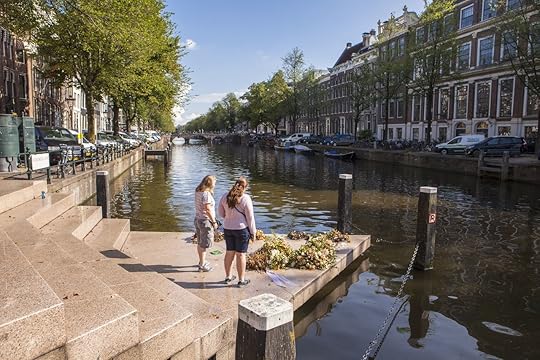
Photo: Alaattin Timur/Shutterstock
In 1987, Amsterdam made waves by unveiling the world’s first monument honoring homosexuals persecuted by the Nazi party. Located on a waterfront square along the Keizersgracht Canal, thin lines of pink granite form a large triangle — the symbol gay individuals wore in Nazi concentration camps. Within each of the triangle’s three points, a smaller triangle acts as a compass leading to other related monuments. One points to the National War Memorial where gay activists laid a lavender wreath in 1970 and sparked the idea for the Homomonument. Another faces COC Nederland, a gay-rights organization that’s been operating since 1946. The third faces Anne Frank House and is inscribed with a quote by Jacob Israel de Haan, a gay Jewish poet: Naar Vriendschap Zulk een Mateloos Verlangen (“Such an endless desire for friendship”).
5. Alan Turing Memorial — Manchester, United Kingdom
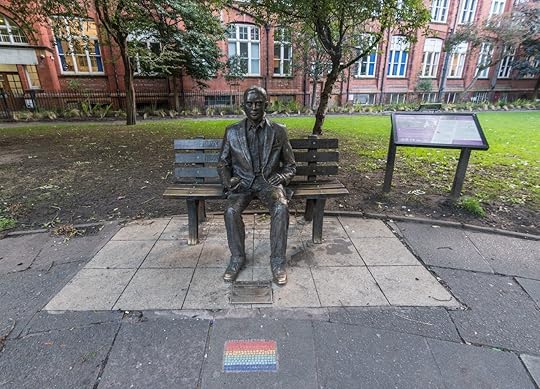
Photo: amirraizat/Shutterstock
Alan Turing’s unmatched intelligence changed the course of world history. He played a pivotal role in cracking Germany’s “Enigma” code in World War II, which some historians estimate shortened the war by two to four years and saved millions of lives. Often referred to as the father of computer science, his theories surrounding artificial intelligence and machine programming laid the groundwork for the Digital Age in which we now live.
Despite his heroic wartime contributions, Turing was prosecuted in 1952 for homosexual acts under a draconian law from England’s Victorian era. His punishment was chemical castration; he died two years later from cyanide poisoning at the age of 41. A half-eaten apple was found next to his body.
In 2001, Manchester, England, unveiled the Alan Turing Memorial in Sackville Park to honor the master mathematician’s life. The tribute, which features a bronze statue of Turing holding an apple while sitting on a bench, is an invitation for passersby to join the tortured genius for a moment of reflection.
6. Gay Liberation Monument — New York, New York
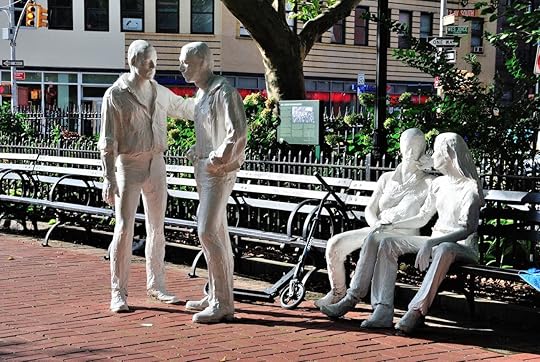
Photo: Nigar Alizada/Shutterstock
“Gay Liberation” was commissioned on the 10th anniversary of New York City’s Stonewall Riots — the site where the first brick was thrown in the fight for LGBTQ rights. The monument was unveiled in Christopher Street Park, across the street from the Stonewall Inn, in 1985.
The controversial monument, which features two same-sex couples in a pedestrian tableau, was initially a defiant stance against homophobia at a time when New York demonized public displays of queer affection. Today, the sculpture’s critiques aren’t rooted in homophobia but in its lack of diversity. Members of the LGBTQ community argue that the cis-gendered couples, painted with white lacquer, fail to represent the city’s kaleidoscopic LGBTQ community.
Regardless of critique, this sculpture is worthy of contemplation: it’s a celebration of how far the LGBTQ community has come and a reminder of how far we need to go.
7. Oscar Wilde Memorial Sculpture — Dublin, Ireland
Oscar Wilde (1854-1900), the Irish-born author famous for his razor-sharp wit in works like The Importance of Being Earnest and The Picture of Dorian Gray, is one of the most prominent gay icons in history. In a time when homosexuality was illegal in England, Wilde, a prolific playwright, was charged with sodomy and sentenced to two years hard labor. He was released in 1897 and died penniless in a rundown Parisian hotel three years later.
For many, Oscar Wilde is a martyr for the LGBTQ community. Although it took nearly 100 years for his hometown to commemorate the artist’s significant cultural contributions with a monument, Dublin’s Oscar Wilde Memorial Sculpture (located in Merrion Square) provides a sacred spot to worship the man and his immortal works.
The sculpture, like Wilde’s life, is awash with color: He dons a nephrite-jade jacket with a pink collar, stormy-blue granite pants, and delicate black slippers that shine like obsidian. The expression on his face is equally complex. On one side, there’s the knowing smirk of a literary bigwig; on the other, there’s the forlorn frown of a man forced to hide. Luckily, in the afterlife, Wilde is finally allowed to live out and proud in the city in which he was born.
8. National AIDS Memorial Grove — San Francisco

Photo: Ken Wolter/Shutterstock
While the AIDS epidemic ravaged San Francisco in the 1980s, a band of locals got together to turn a 10-acre area of Golden Gate Park into a tribute for those lost.
Today, the grove is a series of stone memorials accessed by a path that meanders through a thicket of ancient redwoods. The site, which became a federally designated national monument in 1996, is a solemn symbol of how the local LGBTQ community overcame a plague: with perseverance and a whole lot of love. Flowers regularly laid among the memorials remind visitors how wounds left by the AIDS crisis are still far from healing.
9. A memorial for Marsha P. Johnson and Sylvia Rivera — New York, New York
View this post on InstagramA post shared by women.nyc (@women_nyc) on Jul 29, 2019 at 10:02am PDT
Aside from the Transgender Memorial Garden in St. Louis, the United States is depressingly devoid of monuments honoring the often-overlooked trans community. In 2021, New York City plans to fix that problem.
Marsha P. Johnson and Sylvia Rivera were pioneering trans activists in the early Gay Liberation Movement and members of the 1969 Stonewall Uprising. In 2019, She Built NYC, a public-arts campaign that honors exceptional New York women by creating monuments celebrating their accomplishments, commissioned a memorial honoring Johnson and Rivera to ensure their names aren’t erased from queer history. If all goes as planned, the monument will be the first permanent, public artwork in the world honoring transgender women. 

More like this: The best LGBTQ events you can attend without leaving home
The post Where to find meaningful LGBTQ monuments and memorials around the world appeared first on Matador Network.

How to layer for spring hiking
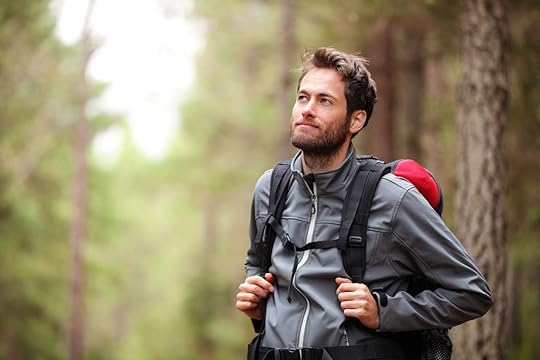
Chilly mornings, warm afternoons, and a cooling breeze. The arrival of spring beckons us outdoors. The only problem is that the tempting blast of heat and sunshine is likely just a temporary front, withholding cold precipitation or frigid gusts. This is particularly true at altitude, where spring is synonymous with sun, rain, wind, and snow, often all in the same day. Fail to dress appropriately, and you may head out for the season’s first solid hike, only to find yourself soggy and miserable ten minutes past the trailhead.
Fear not, intrepid hiker. There’s no need to pack three spare outfits in your 15-liter backpack. By employing the practice of layering, you can be energized by those brief periods of sun and still be prepared for the rest. A proper spring hike layer setup consists of three levels: a base layer to keep you insulated and dry, a mid-layer to maintain general pre-sweat warmth, and an outer layer to protect against the elements, be they wind or water-based. You want to be warm but flexible, dry but breathable. Follow this guide to layering for spring hikes and you’ll not only own the trail, but you’ll also look good doing it.
Baselayer

Photo: Soloviova Liudmyla/Shutterstock
The key to proper base layering is to never forget the term “wicking.” We’re not talking about candles here. Contrary to what some claim, wicking does not mean sweat-proof. Quite the opposite, actually. Wicking refers to the ability of a textile to pass moisture through it without becoming soaked, sticky, or otherwise sad. The last thing you want is to sweat and then be wet and stinky for the rest of your hike. As a base layer, wear an athletic shirt (short- or long-sleeved, depending on the weather forecast) and a pair of long underwear. FITS makes a great pair of affordable hiking socks that you can find at local retailers or online.
Merino wool is known for its wick-ability. You’ll know if a shirt or other piece of clothing is merino wool because merino wool clothing shirt will proclaim loudly and clearly what it’s made of. REI has a number of strong options, but a trip to your local outfitter or sporting goods store can be equally as productive. Thin polyester, such as a light-weight exercise shirt like this one from Patagonia, is another strong option. Look for knock-off brands if $40 shirts make you cringe.
Although cotton is cheap and readily available, we don’t recommend it. The moment you sweat or succumb to the urge to stand in the rain in your t-shirt, your day is over. You’ll be wet until you come into close contact with a towel.
Midlayer

Photo: Vitalii Matokha/Shutterstock
When thinking mid-layers, remember that these items are the most likely ones to end up inside your backpack. Generally worn on the upper body, mid-layers can be a vest, non-waterproof jacket, light hoody, or polyester activewear shirt. While a base layer and an outer layer are useful throughout the season, you may be too warm once you get moving to have three layers on, no matter what the weather is doing. So, you want stuff that can roll easily, such as wool or, later in the season, fleece. For an early spring mid-layer, nothing beats a good puffy synthetic or down jacket. These can be worn in the morning and evening, or in light rain, and then folded into your pack without taking up an unreasonable amount of space.
Despite being warm, fleece doesn’t bundle well and takes up a lot more space in your pack. Swap out that fleece for down in early spring when it’s likely to be quite cold until the early afternoon, or if you plan to sit around a campfire or a post-hike beer at the trailhead in the evening. Later in the season, consider wool. Not only does wool pack well, but it also outperforms nearly all other materials when lightly dampened and it’s quite comfortable against the wind.
Outer layer

Photo: mimagephotography/Shutterstock
Your outer-layer should be easy to take on and off because you’re likely to remove it at least once during your hike. The idea here is that you have a buffer against the elements that can be on call when you need it. You might end up removing the mid-layer but keeping the outer layer on because, for example, despite a light rain, you’re warm and moving — and just need to stay dry. It’s equally important that this layer roll and fold easily because you’ll need it throughout the season. While a March hike sees you keeping the jacket on, in May it may only be necessary as a precaution.
You definitely want a dependable but thin rain jacket such as these from Patagonia, If starting early in the morning, you may opt to keep your hands warm with a pair of hiking gloves, such as these from Outdoor Research. A beanie (or a Maple Leaf toque, eh) is a strong option because it keeps your ears warm, and, should a freak snowstorm manifest itself, your head will stay dry. Mountain Hardware makes a great pair of hiking pants to wear over your long underwear, with similar options for shorts to wear later in the season. Early in the season, a pair of rain pants can save the day, along with a pair of hiking gaiters to protect against a wet trail or a stream crossing. 

More like this: The ultimate summer backpacking guide for newbies
The post How to layer clothing for spring hikes appeared first on Matador Network.

How to embrace slow living

COVID-19 has forced us to slow down, restrict our movements, and turn our attention inwards. That’s a major lifestyle change for many of us.
The slow-living movement reminds us to be mindful of what’s around us. It’s about cultivating simple pleasures and using our resources wisely, skills that are suddenly very useful during a pandemic. Slow living began with an exploration of local, sustainable food and has expanded to encompass a more thoughtful, intentional way of life.
The movement is new, but the concept isn’t. Contemplatives, artists, scientists, philosophers, and naturalists traditionally embrace a more deliberate, observant lifestyle. These disciplines offer valuable lessons on how to expand our awareness and appreciation of the world around us and transition to a slower-paced life.
Matador Network consulted mindfulness experts all around the world to learn how we can reduce stress and increase feelings of peace and well-being at a moment when so much is changing. Here are 12 practical tips and simple activities to help you ease into slow living during this time of social distancing.
1. Shift gears to prioritize quality time.

Photo: pikselstock/Shutterstock
The Greek language has two words for time. Chronos is sequential and linear. It’s about productivity, results, and breaking time down into measurable parts like minutes and hours. Many Western societies and most workplaces operate on chronos time, so when that system is disrupted (like when routines and responsibilities are upended during a pandemic), we feel adrift.
When chronos time isn’t useful, shift to kairos time. Kairos was the Greek god of opportunity, so kairos reminds us that life is fleeting and we need to seize the moment while we can.
Kairos time is quality time. It’s about finding the perfect moment to act. We experience it when we are caught up in a conversation, dive into a new interest, when we’re “in the zone,” or become so involved in a task that we completely lose track of time.
“In the arts, we don’t think about time,” the late sculptor Bruce Howdle said as he stirred glaze during an interview at Bruce Howdle Studios in Mineral Point, Wisconsin. “Time is not the essence of value.”
Howdle explained that creation is what matters, not the amount of time spent on the task. Since many of our external obligations and previous commitments are on hold, we can prioritize activities we find enjoyable and meaningful, regardless of the outcome.
2. Focus on the positive with a daily check-in.
Our brains are soothed by routine. Artist Nichole Rae, who teaches journaling in Moorhead, Minnesota, says that when routines are disrupted, it’s important to set aside time to create order in our minds. She recommends dedicating a few minutes each day to check in with yourself and adjust your emotional state.
“Our mental health is being taxed. We’re all fearing things, even if we haven’t come down with this actual virus,” she says. “I take a moment to think about what I most need from my day — ‘I need peace, I need calm. I need to be in the present.’ Just list them.”
Then put the list where you can see it — on the fridge, your planner, or on notes around the house. Rae says that the simple act of focusing on the positive attributes you want to cultivate can shift thoughts away from the negative.
3. Get outside to boost physical and emotional health.

Photo: Twin Sails/Shutterstock
Studies have shown that as little as 15 minutes outdoors can have powerful positive effects on mood, cognition, creativity, and physical health. Being in nature is an easy way to practice mindfulness too.
“It’s a way to escape, be alone with your thoughts, experience nature, get the sense of a bigger world: a place to center yourself,” says Edward T. Welsh, Park Ranger at Badlands National Park in South Dakota.
Many parks and nearly all public park buildings are closed during the COVID-19 pandemic, so do your research before you go and focus on green spaces close to home. Instead of national and state parks, consider forest areas, wildlife refuges, and pocket parks in your neighborhood. Pack plenty of water, stay at least six feet away from other people, stick to trails, and avoid any hard surfaces where the virus can linger, like picnic tables.
At home, pitch a tent on the lawn, take up backyard bird-watching, or relax on the patio. If you’re under orders to shelter in place, open the windows to get some fresh air, tend to indoor plants or take a virtual tour of a national park.
4. Unplug to recharge.
Turning off our devices and directing our energies inward can have profound effects on our ability to focus, decompress, and connect with the people around us. Unplugging shields us from the barrage of coronavirus news and helps us maintain our perspective.
A period of rest is part of many spiritual practices around the world. You don’t need to be religious to make the idea work for you.
Rabbi Jamie Serber of Grand Forks, North Dakota, says keeping Shabbat (the time of rest between Friday night and Saturday night) was challenging for her and her young family at first. But she adds that there are many ways to adapt the concept that will work well during this time of social distancing.
“Jews use this time to unplug, recharge, and be with family,” Rabbi Serber explains. “Some Jews choose to go to synagogue, while others have other ways of connecting with God through art, music, nature — whatever may speak to them. During this time we can all learn to slow down and appreciate the gifts that our regularly busy lives don’t allow for.”
5. Harness your breath to calm your mind.

Photo: fizkes/Shutterstock
Yogis have practiced pranayama (guiding energy through breath control) for centuries. But anyone can use simple breathing exercises to calm the nervous system and return to a neutral state during times of distress or distraction.
“Any kind of breathing practice can really bring you back to the present moment,” explains Moorhead, Minnesota yoga teacher and hypnotherapist Andrea Krejci Paradis. “Square breathing has been around for a very long time. It’s actually used by the Navy Seals to concentrate and reduce stress.”
To try it, slowly breathe in through your nose for a count of four. Gently pause, keeping the air in your lungs for a count of four. Exhale slowly for a count of four. Pause for another four counts. Repeat for 10 cycles or until a feeling of calm resumes. The technique is safe for anyone except pregnant women and those with untreated high blood pressure.
6. Cultivate hygge to increase feelings of safety and well-being.
“Hygge (pronounced ‘hoo-gah’) is quality of presence and an experience of belonging and togetherness,” says author Louisa Thomsen Brits in The Book of Hygge. “It is a feeling of being warm, safe, comforted and sheltered.”
There’s no formula for cultivating this Danish concept, or its European cousins gemütlichkeit (German), mys (Sweden), and koselig (Norway). It’s all about what makes you feel cozy and protected.
You probably have everything you need already. Light candles, linger over dinner, curl up with a book in front of a crackling fire, savor a cup of coffee or tea, or gather the family for a movie or game night.
7. Embrace slow food for good health and good memories.

Photo: WAYHOME studio/Shutterstock
“Now is a great time for people to learn to cook new things from scratch, like pasta, bread, and pancakes,” says Chef Ethan Habasco of Rowe Inn in Ellsworth, Michigan. “But more than anything, cooking with the family will make a house feel like a home. Even if it is as simple as buying a DIY pizza kit to keep the kids busy, it is something they will cherish and remember. So, try that new recipe, use up the old boxes in the pantry, dig through your freezer.”
When the time comes to replenish your supplies or stock up on staples, try grocery delivery or curbside pick-up to minimize social contact. Since many food co-ops work directly with local producers, they may have a different selection of products than the big box stores.
8. Reduce clutter to restore order.
Clearing clutter can free up valuable space in our homes and provide a sense of accomplishment and order.
Winery dog delivery in Maryland

From waiting in lines six feet apart from other shoppers at grocery stores to pre-ordering groceries for pick-up or surviving solely off GrubHub, the current landscape of food consumption is almost unrecognizable. To add a little bit of joy to the difficult task of shopping for food and drinks these days, this Maryland winery is using its 11-year old boxer to carry wine orders to customers in a saddlebag.
At the Stone House Urban Winery in Hagerstown, Soda Pup is helping the social distancing effort by carrying wine to customers waiting curbside for pickup. He can only carry two bottles of wine at a time but does a great job of it.
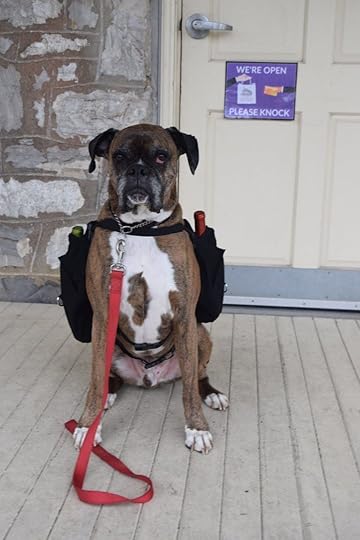
Photo: Stone House Urban Winery/Facebook
According to owner Lori Yata, “When we get the call, I hold up Soda’s vest and he hurries on over. Not exaggerating, he really hurries over and stands ready. I put a couple treats in the pack, a bag for the wine, and the two bottles of wine. I then open the door and he marches on up the walk to the curb and parking lot to deliver the wine.” But Soda Pup is a dog after all so, Yata has to make sure there are no distractions that would take him off course, like geese or squirrels.
As you might imagine, Soda Pub has become more than just a convenient means of wine delivery but a major attraction and a reason for many to visit the winery.
“We’ve had people call in just specifically to have Soda Pup bring wine out to them. People who have never even been here before,” said Yata. “They said they came in because they saw the post about Soda Pup and they wanted to come and meet him.” 

More like this: Everything you need to know about taking your dog into the great outdoors
The post Soda Pup, the winery dog, does curbside wine deliveries during the coronavirus crisis appeared first on Matador Network.

Pandas mate in Hong Kong zoo

For Ying Ying and Le Le, two 14-year-old pandas at the Ocean Park in Hong Kong, the closure of the zoo during the coronavirus pandemic may have brought the privacy they were longing for. For the first time in 13 years, the pair mated on Monday without the awkward, spying eyes of hundreds of visitors.
Giant pandas Ying Ying and Le Le succeeded in a natural mating, @Ocean_Park has announced. "We hope to bear wonderful pregnancy news to Hong Kongers this year and make further contributions to the conservation of this vulnerable species," the park's Michael Boos said. pic.twitter.com/yJCpCdVHeK
— Hong Kong Free Press (@HongKongFP) April 6, 2020
According to a statement from the zoo, “This is the first success since the two giant pandas began attempts at natural mating a decade ago, through which the Park hopes to bring to Hong Kongers exciting pregnancy news later this year while further contributing to the conservation of the vulnerable species.”
In the wild pandas have “reproductive rates comparable to some American black bear populations, which are thriving,” explains the World Wildlife Fund. But in captivity, they are poor breeders.
Michael Boos, Ocean Park’s executive director in zoological operations, said that the pandas have been exhibiting signs of attempted mating for weeks now, and that “the successful natural mating process today is extremely exciting for all of us.”
According to the WWF, giant pandas are a vulnerable species with only 1,864 wild individuals left in the world. 

More like this: How to make sure your animal encounter is ethical
The post For the first time in 13 years, this panda couple mated in Hong Kong shuttered zoo appeared first on Matador Network.

The best things to do in Cabo Frio
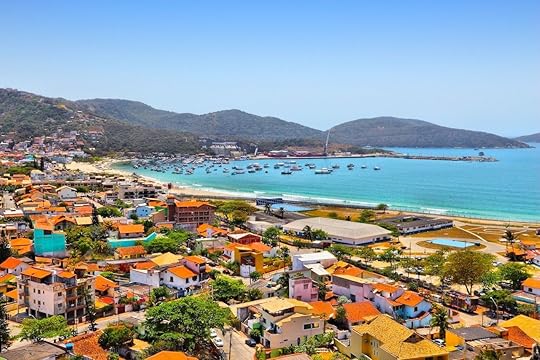
The turquoise waters and paradise beaches of Brazil’s Região dos Lagos have earned this watery region the nickname Caribe Brasileiro, the Caribbean of Brazil. The area lies on a lake- and lagoon-filled coastal outcropping in Rio de Janeiro state, just a couple hours’ drive north of the city of Rio. While it’s best known for the glitzy beach resort of Búzios, the less-traveled town of Cabo Frio is less than an hour south of Búzios and offers a lot to those fortunate enough to visit. Locals cherish Cabo Frio for the high quality of life, the ease of getting into nature, and the fact that you can have gorgeous places to yourself.
It has some of Brazil’s best beaches.
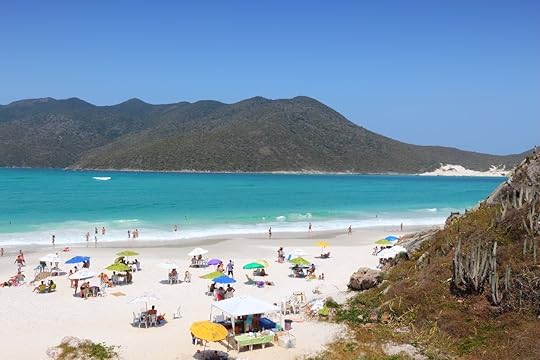
Photo: Tupungato/Shutterstock
Several of the beaches in Cabo Frio and the neighboring town of Arraial do Cabo have been named the best in Brazil. You could visit a new beach every day for months without running out of options. Praia Pontal, Praia das Conchas, and Prainha are the spots to head to relax and listen to the waves, while Praia Foguete and Praia Brava are wilder with bigger waves.
Cabo Frio’s main beach, Praia do Forte, should be your pick for lively ambience. At night, the boardwalk fills up as people kick back at the kiosks with live music and an icy cold Brahma, Brazil’s most popular lager. This is also where the city’s postcard symbol from the 15th century is located, the San Matheus Fort. Climb up its stairs for great views, especially around sunset.
You’ll find swells all year in and around Cabo Frio, considered one of Brazil’s top surfing areas. Peró, Dunas, and Brava beaches are a few options with great wave-riding conditions. In addition to competitions like Cabo Frio Surf Pro, the Surf World Cup is held in the neighboring town of Saquarema. The entire region has a strong surf culture. Stop by Barrel Surfboards on Rua 13 de Novembro for gear and to check in on the day’s conditions.
Cabo Frio is also the birthplace of Brazilian surf champions like Victor Ribas, and home to the surf museum with the largest collection of surf equipment in Latin America. Owner Telmo Moraes has more than 800 boards on display. It’s an informal gallery, so if you wish to visit, stop by the location on Rua Aníbal Amador do Vale in Citizenship Square in the late afternoon. Google shows that it opens at 5:00 PM, but comments list hours starting as early as 4:00 PM.
You can find secluded spots, dive, or swim with turtles.
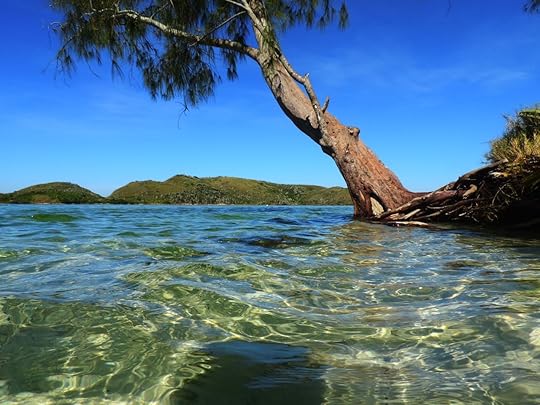
Photo: Gilmar Paolilo/Shutterstock
Many local providers including Guga Tour and Camp Tur Boat Trips organize ocean excursions that take you around nearby islands to a series of caves and beaches only accessible via the water. While these tours can get crowded in the high season — South America’s summer months are from December to March — you can also rent your own boat for a more private experience. Combine your cruise with scuba diving if that’s your thing. Papagaio Island is one of the most sought-after diving spots in the area, but there are more than 30 other spots to choose from.
Either a 20-minute boat ride or a 30-minute drive from Cabo Frio is Ilha do Japonês, Island of the Japanese, which some say was named for a man who came from Japan and lived on the island over three decades ago. The island is a popular escape with stunning scenery. Relax on one of its beaches or rent a kayak and tour the bay. Don’t be surprised if you’re accompanied by giant sea turtles, as they’re common in the area. When you’re ready to eat, small boats sell everything from churrasco (barbecue) and salgados (salty snacks) to Caipirinhas, the official cocktail of Brazil made with a sugarcane liquor called cachaça, crushed limes, sugar, and ice.
You can admire beach views or colorful bikinis (in shop windows).
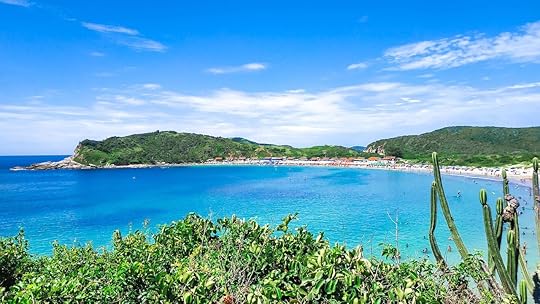
Photo: Raphael Borges/Shutterstock
Apart from the week of Carnival, life is relatively slow in Cabo Frio, with few crowds outside of weekends and major holidays. Since there are so many places to visit in the area, it’s possible to find secluded spots that make you feel like you’re the only person in the world. Whether it is a little beach or a rough cliff with a view, you will be able to disconnect from everything and everyone for a while.
Or you can marvel at Brazil’s obsession with bikinis. Shopping Gamboa, also known as Rua dos Biquínis, Bikini Street, lives up to its name. With over 100 swimwear shops lined up one after another, it’s a destination of its own. You can easily spend hours here, going from one colorful shop to another and looking at both exclusive and budget beach-life brands. If you don’t find a piece of swimwear you like here, you probably won’t find it anywhere.
The nightlife is just right — not too crazy, not too mellow.
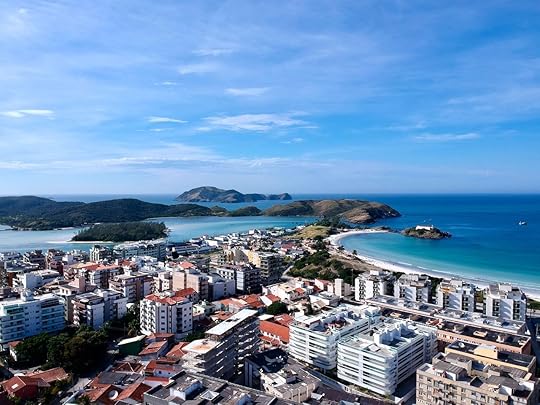
Photo: Andre Souza Lima/Shutterstock
While Cabo Frio isn’t Brazil’s party capital, the town has great options for dining, bar-hopping, and live music. The Boulevard by the Itajuru Canal and the charming historic center come to life at sunset, with terraces ideal for spending a few — or several — hours at the Boulevard Pub, Anexo Job’s, and the Queens Lounge Bar. Rua Porto Alegre, a street with no-frills bars, tasty crepes, and local musicians, is a more recent addition to the scene. Here, the nightlife goes on until about 3:00 AM. If clubbing until sunrise is more your style, clubs like Privilège in Búzios, described as Brazil’s Ibiza, are located 30 minutes away.
Part of what makes Cabo Frio so appealing is its proximity to diverse places and activities in the Lakes Region. While life in Cabo Frio is relaxing, it’s even slower in Arraial do Cabo, located a 15-minute drive away. When it’s time to leave the “Caribbean of Brazil” behind, Cabo Frio International Airport has direct connections to other destinations in Brazil such as Petrópolis, Rio de Janeiro, São Paulo, and Belo Horizonte.
Accommodations are affordable.

Photo: Tupungato/Shutterstock
Tourism has increased in Cabo Frio over the past 10 years, resulting in accommodation options of all kinds. A studio along Praia do Forte or a small hotel in the historic center such as the Pousada Enseada da Vila ($53 per night) are good alternatives if you like to be close to the action. If you prefer more privacy, there are beach cabanas where you’ll be surrounded by nothing but nature.
Apart from the commercial options, several locals rent out apartments and houses for the season both in the city and by the beaches. Check Airbnb or run a quick search on Google Maps for current listings. No matter which option you choose, accommodations in Cabo Frio are more affordable in comparison with the more touristy towns nearby. 

More like this: Freshwater snorkeling in ethereal Bonito is Brazil’s best-kept secret
The post The beaches of Cabo Frio, Brazil, are as epic as the surfing appeared first on Matador Network.

Matador Network's Blog
- Matador Network's profile
- 6 followers



